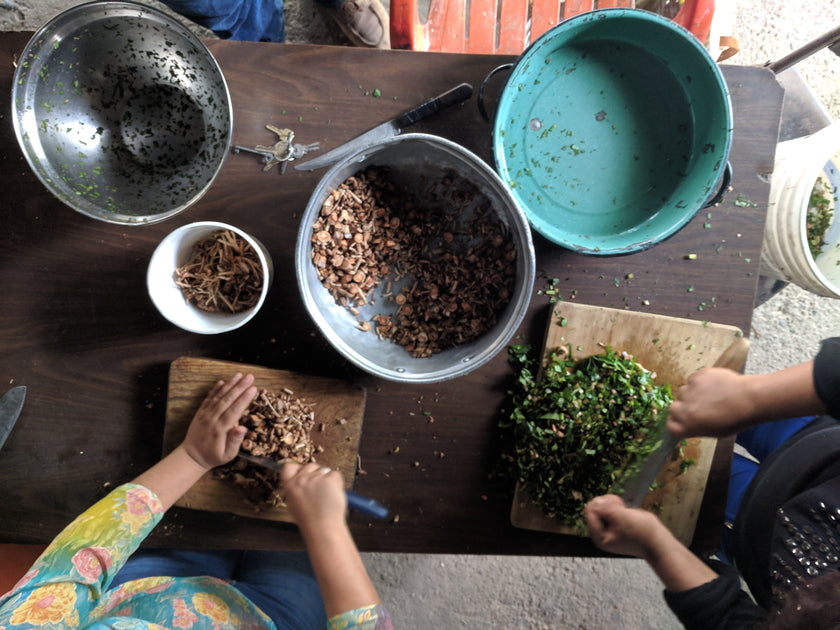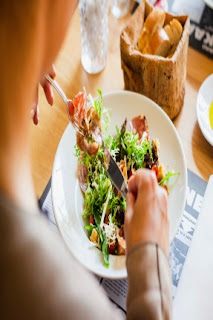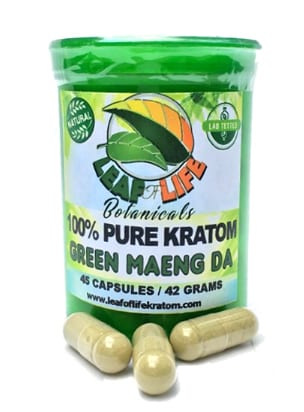The immune system is very complex, yet traditional peoples have manages to develop practices which modern science now confirms as powerful interventions to improve immunity. For example, in traditional cultures around the world sweat lodges were built to engage in ritual purifications amongst both sexes. Now we know that heat shock protein is released during these saunas which stimulates innate immunity.
In modern traditional Native American cultures I’ve experienced a sweat with a group of men, some of which have fasted for the day. In the sweat we would speak our hearts with humility, pray, perhaps drink some herbal tea. One could write a book in great detail on all the ways science has confirmed the benefits of these acts. Brought together in unison, they are very powerful. Here, I’d like to talk about some of the herbs that can help initiate our various immune responses as well as integrate with our natural Vitalist practices which we may draw upon.
4 Herbs to Enhance Immune Response
Red Root (Ceanothus species)
Yerba Mansa (Anemopsis californica)
Dan Shen (Salvia miltiorrhiza)
Baical Skullcap (Scutellaria baicalensis)
Moving the lymph system is something that we can conceptualize in the modern world due to the identification of the lymphatic system just a few hundred years ago. However, I believe it’s very likely that peoples previously had an awareness of this delicate system which regularly cleanses the system of wastes and transports key nutrients as well. A stagnant lymph system is often part and parcel of a chronic lingering infection, or the consequence of a poor diet, or excessive intake of medications. Even a sedentary lifestyle has clear negative impacts on the proper functioning of our lymph systems.
Two of the herbs I often look to when needing to boost lymphatic movement are red root (Ceanothus species) and yerba mansa (Anemopsis californica). Each of these herbs work on the lymph system in unique ways but both are very useful in this regard.
Red root may be considered more specific to the lymph system, and, frankly, it is my all-time favorite lymphatic herb. It is very useful in acute and chronic infections given the burden placed on the lymph in cleaning up from heightened immune activity. This pours over into the spleen, and can be witnessed as a sluggish feeling overall, lack of appetite, brain fog, and perhaps holding onto excess moisture, especially in the extremities. Red root also has a beneficial effect on the blood by improving its charge and thereby enhancing the flow of the blood. It is a subtle and gentle detoxifying agent and can be used daily for a long period of time by a wide range of folks without any concern for toxicity (aka, side effects).
Taking red root on a daily basis is a wonderful way to keep the blood from getting too sticky (improving tendency to clot). Although the herb was used for its coagulating effects in the early 20th century, that was instead for topical application. Internally, it behaves quite differently on the blood and is not a coagulant.
Although yerba mansa has served as a virtual cure-all amongst the peoples of the American desert regions, I’m going to focus on its usefulness in moving the fluids in the body, as well as protecting the mucous membranes. The mucous membranes are our primary line of defense (aside from the skin). The mucous membranes line the respiratory tract, digestive tract, and genito-urinary tract.
Thus, yerba mansa has so many applications in this way including bacterial, fungal, and viral infections, chronic inflammation, and accumulated toxicity in the tissue resulting in boils, etc. Its ability to promote fluid movement is similar to the effects of red root, but transcends the lymph over into blood, mucus, and even extracellular fluid (what exists between the cells). Perhaps yerba mansa even helps promote the movement of cerebrospinal fluid.
Look to yerba mansa for infections of the lymph, respiratory, and digestive systems, as well as the skin. Here you can use it both topically and internally. Further, yerba mansa contains endophytic fungi growing within its tissue lending more complexity to its antimicrobial qualities.
Yerba mansa is a classic remedy for any sinus condition and has been relied upon by many during acute respiratory infections. We feature it in our Hay Fever Formula, Drain the Swamp Formula, and our Immune Formula.
Dan shen (Salvia miltiorrhiza) is a Chinese herb which has been used extensively for millennia for systemic illnesses with a particular focus on the heart. Today, it is applied in a modern hospital setting, for example, as a primary therapeutic for cardiac arrest, or stroke patients upon admission due to its powerful recuperative effects on the heart. It promotes blood circulation and is also a primary remedy to help prevent blood clotting. Dan shen also upregulates ACE-2 which supports cardiovascular and respiratory health. Similar to red root, above, dan shen will support lymph movement by toning the spleen. It is also neuroprotective.
Outcomes of respiratory viruses are improved due to dan shen’s strengthening of the lungs. Dan shen is profoundly anti-inflammatory and, thus, is a profound immune regulator, and can inhibit cytokines as well. Additionally, it can reduce pathogenic priming (an effect which allows a virus to become more virulent).
Dan shen is a powerfully healing herb with a wide array of significant applications. I feel that it is an important herb for a great many people at this for the protection it provides the nervous system, the blood, and cardiovascular system as a whole.
Relatedly, I have found our native Salvia columbariae, chia, to be an appropriate substitution for dan shen and it is featured in our Cardiovascular Support formula and our CV3 Cell Protection Formula.
Baical skullcap is a perennial herb naturally occurring throughout northern Asia (Mongola, Russia, China) which is widely used in traditional Chinese medicine. Amongst its many applications includes antimicrobial, antiviral, anti-inflammatory, hepatoprotective, and neuroprotective.
We are in an era of rampant nervous system dysregulation, mitochondrial dysfunction, as well as blood toxicity. To an extent, Baical skullcap can address each of these through the effects of its flavonoids. In part, its beneficial effects on the liver help renew and strengthen the blood. Hepatitis, fibrosis of the liver, and fatty liver are all improved with the tea or tincture of Baical skullcap. When liver function can be normalized, the immune system function is greatly enhanced.
Baicalein, a compound found in Baical skullcap, has been found effective at reducing reverse transcriptase in HIV-1 hinting that the herb may prove beneficial against other retroviruses. It is also great at inhibiting blood clotting as well as block attachment to ACE-2 receptors, and has various ways of protecting and repairing the tissue of the heart (eg. prevents the increase of cardiac troponin) while helping with any circulatory issues.
In common with the above mentioned herbs, Baical skullcap tones the endothelial lining of the lymphatic system improving integrity and the flow of waste products out of the organs. Additionally, immunomodulatory effects by this herb improve the outcome of bacterial and acute viral infections.
Importantly, Baical skullcap works against oxidative stress including reactive oxygen species (ROS) and its neuroprotective effects may be of great benefit against neurodegenerative disease. Also, consider Baical skullcap for any brain inflammation or central nervous system injuries.
All of the above places Baical skullcap at the front of a natural protocol to enhance and recover adequate immune function in the face of today’s environmental threats and communicable illnesses. Whether looking to simply boost immunity, reduce inflammation and improve tissue integrity, protect the brain, heart, and nervous system, or simply help fight an acute illness, Baical skullcap is an important herb to have on hand.
References
Scutellaria baicalensis, the golden herb from the garden of Chinese medicinal plants. https://www.ncbi.nlm.nih.gov/pmc/articles/PMC5031759/
Scutellaria baicalensis, the golden herb from the garden of Chinese medicinal plants. https://www.ncbi.nlm.nih.gov/pmc/articles/PMC5031759/
SARS-CoV-2 (COVID-19): Herbal Protocols for the Treatment of Infection and Post-Coronavirus Syndrome. https://www.stephenharrodbuhner.com/articles/
Southwest Medicinal Plants, John Slattery. 2020.


